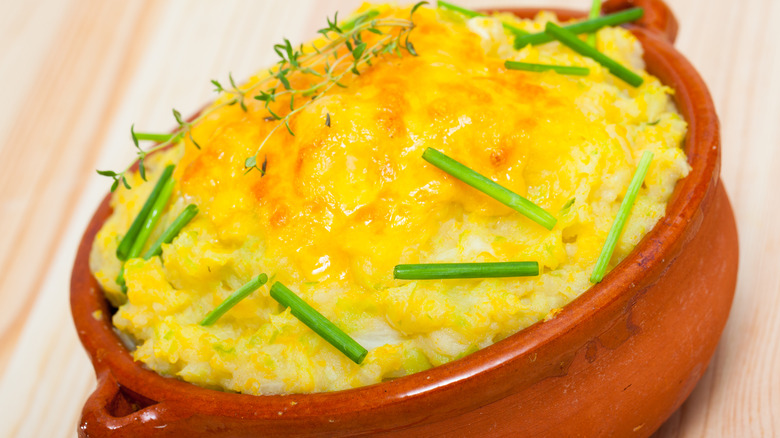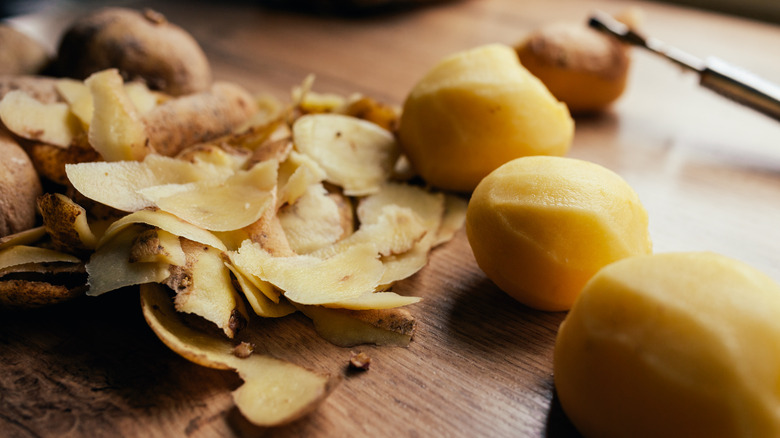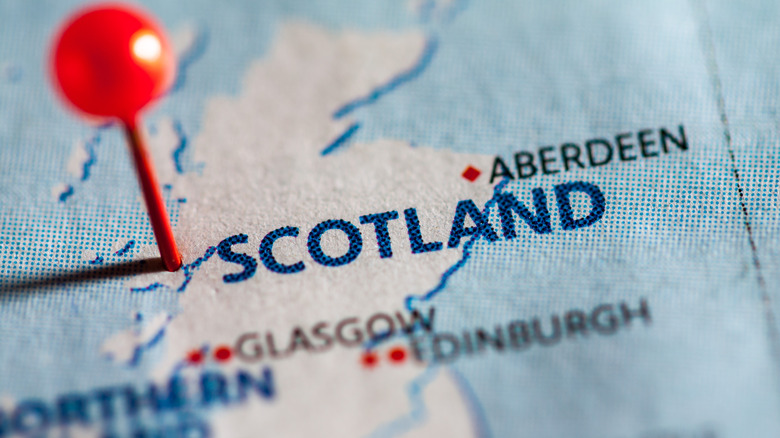Scottish Rumbledethumps Is A Dish That's Much Easier To Cook Than To Say
The cuisines of England, Ireland, and Scotland aren't interchangeable, but they're also not wildly different. Since the three regions have a similar climate, they grow many similar crops, including potatoes, cabbage, and turnips. Those three happen to be the central components of a Scottish dish called rumbledethumps, which at a glance might resemble Irish colcannon and English bubble and squeak. One could classify each of these baked dishes as vegetarian takes on Shepherd's pie, but while they look and taste somewhat similar, they're not the same.
One of the distinguishing features of rumbledethumps — which, spoken three times fast, sounds like an incantation to raise a friendly ghost from the grave — is that it's incredibly adaptable and easy to make (and even easier to eat, thanks to its soft and creamy texture). All you need is the aforementioned vegetable trio, plus butter and plenty of cheddar cheese. It's well worth attempting to make at home, and learning the story of how it got its fairytale-sounding name.
All mashed everything
The easiest way to whip up rumbledethumps is by using leftover mashed potatoes and mashed turnips, which serve as the base of the dish. If you don't have leftovers, don't worry — rumbledethumps is still a cinch to make from scratch. Kick things off by following your favorite mashed potatoes recipe using Yukon golds, russets, long white potatoes, or a similar potato variety with high starch content. Then turn your attention to the turnips, which should be peeled, boiled, and mashed before they're combined with the potatoes into a creamy beige amalgamation.
With your starch taken care of, you'll want to sautee your shredded savoy cabbage (or kale or chard) in butter until it's soft and silky, adding thinly sliced onion if you wish. Once you add it to your potatoes and turnips, mash it all together and add salt and pepper to taste. At this point, the hardest part is over; all that's left to do is assemble and bake.
After adding the mixture to a casserole dish and spreading it into an even layer, consider finishing it off with a generous sprinkling of grated cheddar cheese. Pop it in a 350-degree Fahrenheit oven, covered, for half an hour. Finally, let it bake for a few extra minutes uncovered — you could even stick it under the broiler — to get that bubbly, slightly crunchy top. Eat it on its own or pair it with a meaty roast.
Rumbledethumps is an onomatopoeia
Back in 2009, when the former U.K. Prime Minister and Labor Party leader James Gordon Brown revealed that rumbledethumps is his favorite dish, The Guardian's Tim Hayward wrote that it's named after the "rumble" and "thump" sounds it makes in the pot once it gets cooking, not unlike England's bubble and squeak. The Oxford English Dictionary also notes the antiquated use of the word "rumbled" as a food that is mashed or scrambled, as in rumbled eggs.
You already know how to make it, but just for fun, there's an excerpt of a rumbledethumps recipe from Blackwood's Edinburgh Magazine, published in 1825: "Take a peck of purtatoes, and put them into a boyne — at them with a beetle — a dab of butter — the beetle again — anither dab — then cabbage — purtato — beetle and dab — saut meanwhile — and a shake o' common black pepper — feenally, cabbage and purtato throughither — pree, and you'll find 'em decent rumbledethumps."


